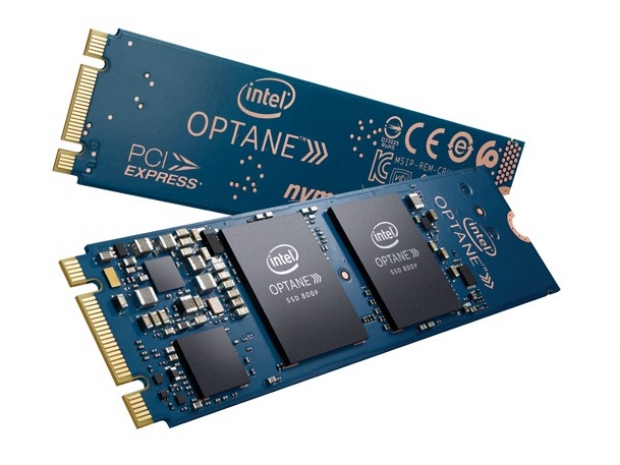The 800P joins the Optane SSD 900P, designed for enthusiasts and shares its Optane memory acceleration solution to speed up slower storage, like hard disk drives and SATA SSDs.
Intel Optane SSD 800P enables fast system boot, quicker application load times and smooth multitasking. It is ideal for use as a standalone SSD, in a dual drive setup or a multiple SSD RAID configurations (PCH-based or CPU-based).
The drive supports lower power states, allowing it to operate in devices like laptops and two in one device, as well as desktop systems. The 800P has low queue depth random workloads, where most client system activity takes place and offers what Intel claims is "uncompromising responsiveness and throughput". The 800P is available in 58GB and 118GB capacities in the M.2 2280 form factor using an NVMe PCIe 3.0 x2 interface.
The new 800P series doesn’t offer a full PCIe 3.0 x4 connection via M.2. However — each drive only uses an x2 connection, which means you can theoretically RAID them together on many motherboards, assuming you have more than one M.2 slot.
Overall performance figures from Intel and other websites suggest that Optane is a game-changer in specific areas. It’s random read/write performance, and overall drive latency is well above any SSD in some cases. Intel’s benchmark numbers and the reported stats from Tech Report and Hot Hardware confirm this
The downside is the price. The new drives Intel is launching today are a 58GB drive for $129 and 118GB for $199. Its accelerator cache drives with 32GB of Optane is also cheaper than the 58GB drive in per-GB terms, at $1.87 per GB rather than the $2.22 on the 58GB drive.




